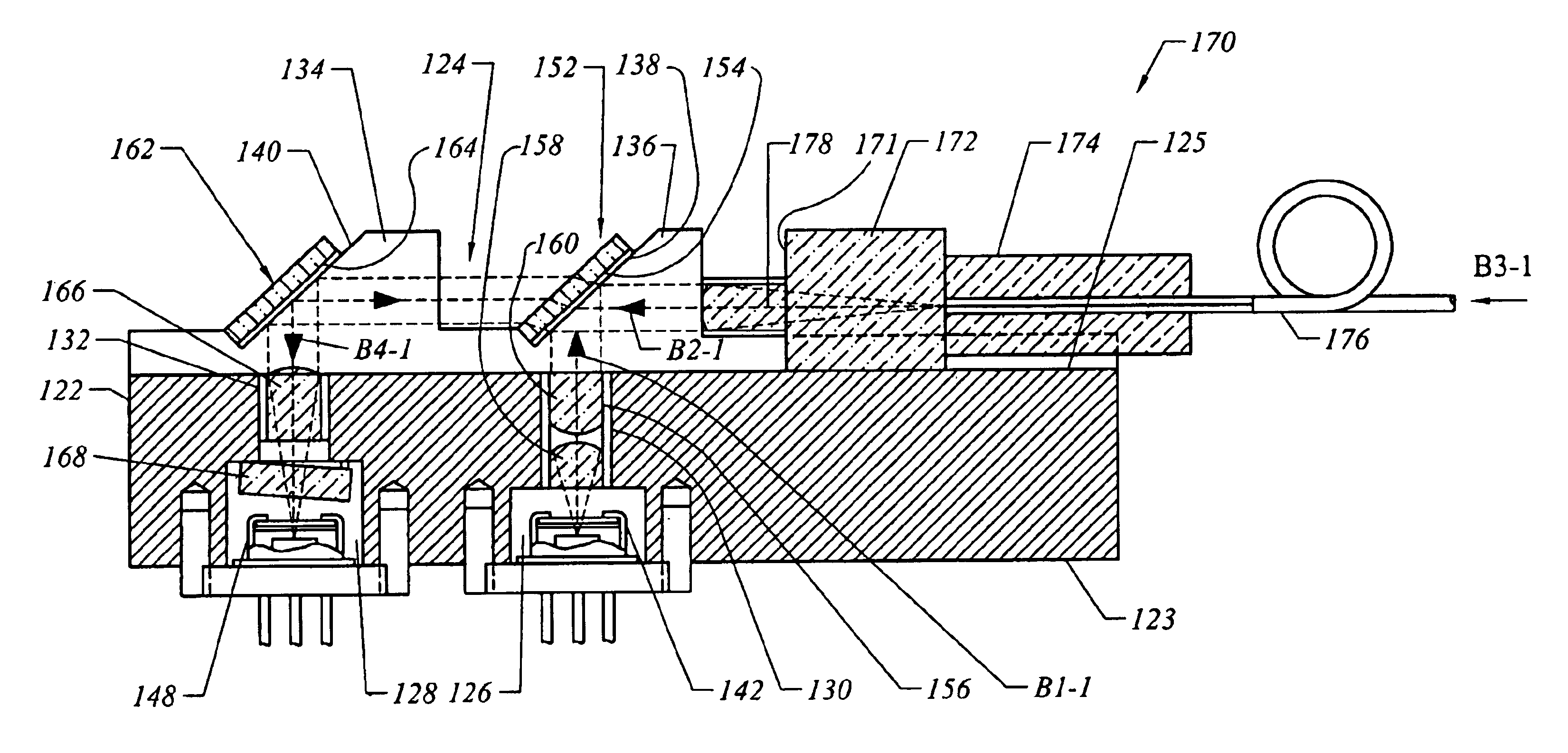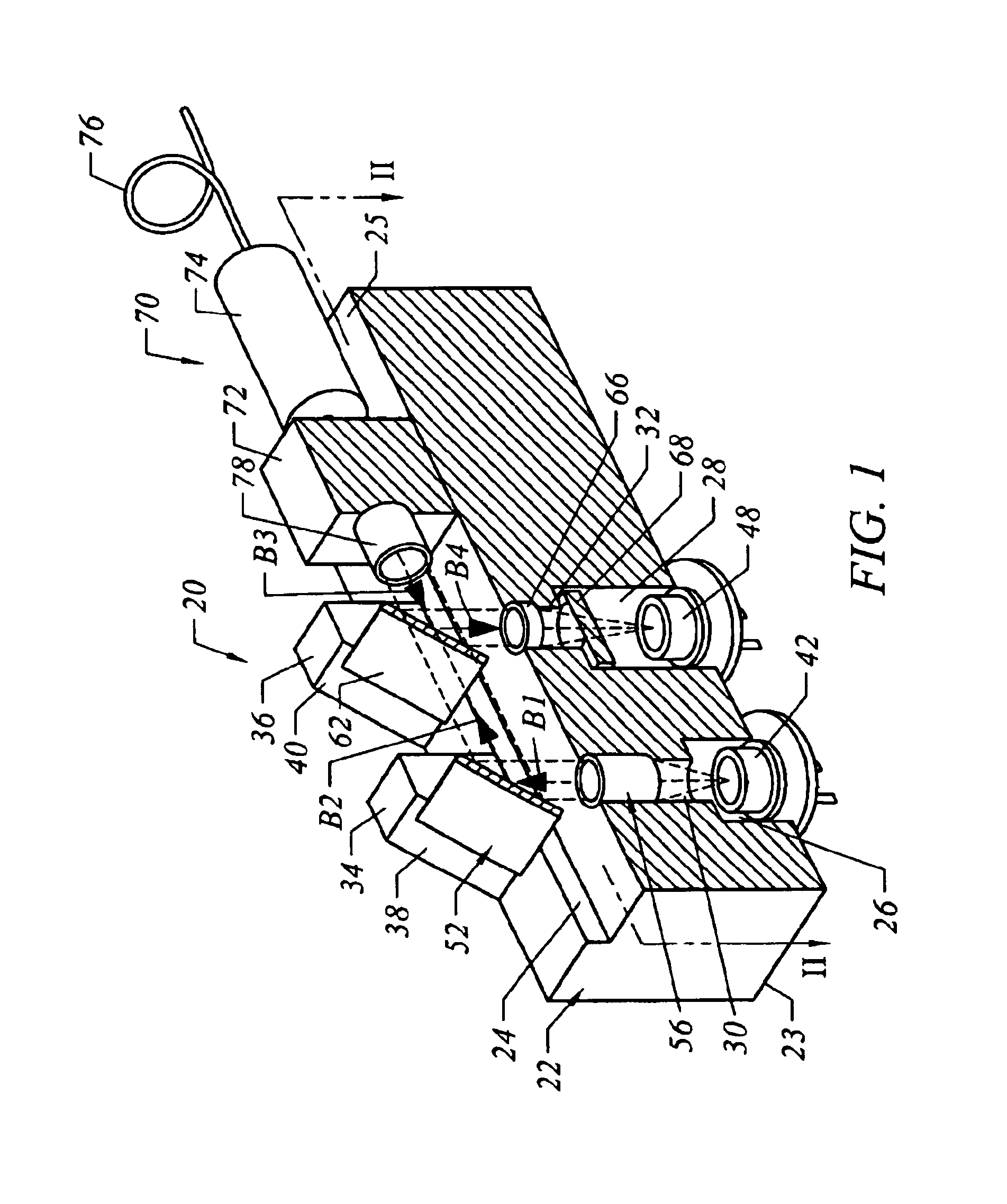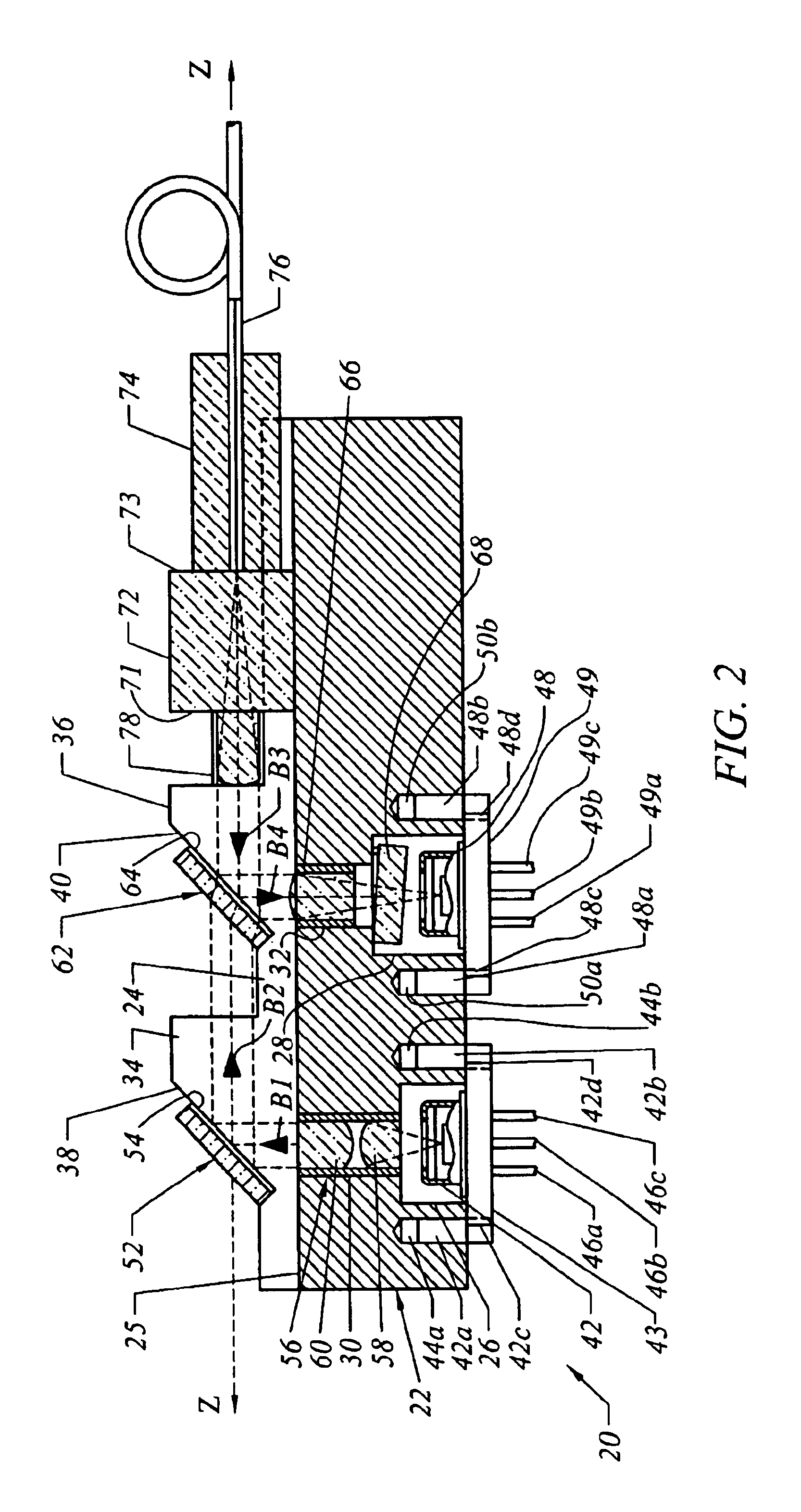Optical module for high-speed bidirectional transceiver
a bidirectional transceiver and optical module technology, applied in the field of optical modules for high-speed bidirectional transceivers, can solve the problems of reducing the overall performance of the station, requiring many expensive and time-consuming adjustments, and cumbersome arrangement in implementation, so as to simplify the adjustment procedure
- Summary
- Abstract
- Description
- Claims
- Application Information
AI Technical Summary
Benefits of technology
Problems solved by technology
Method used
Image
Examples
Embodiment Construction
[0030]In an attempt to find a solution for the problems of the prior art, the applicants understood that the problem associated with limitations in transmission speed cased by inductance of the lead wires can be solved by reducing the length of the wires. First the applicants tried to improve the classical orthogonal architecture of a bidirectional transceiver by coupling it with a vertical flexible PC board, then bending the diodes' terminals at 90°, and connecting them to the main PC board. Although this method allowed some increase in the transmission frequency, it appeared to be time and money consuming and not suitable for mass production.
[0031]The applicants also tried to place a laser diode and a photodiode on the same side of the bidirectional transceiver. This allowed direct plugging of the transceiver to holes of the PC board with minimum stray inductance between the laser diode and a laser driver, while electrical assembly of the transceiver on the PCB could be done under...
PUM
 Login to View More
Login to View More Abstract
Description
Claims
Application Information
 Login to View More
Login to View More - R&D
- Intellectual Property
- Life Sciences
- Materials
- Tech Scout
- Unparalleled Data Quality
- Higher Quality Content
- 60% Fewer Hallucinations
Browse by: Latest US Patents, China's latest patents, Technical Efficacy Thesaurus, Application Domain, Technology Topic, Popular Technical Reports.
© 2025 PatSnap. All rights reserved.Legal|Privacy policy|Modern Slavery Act Transparency Statement|Sitemap|About US| Contact US: help@patsnap.com



